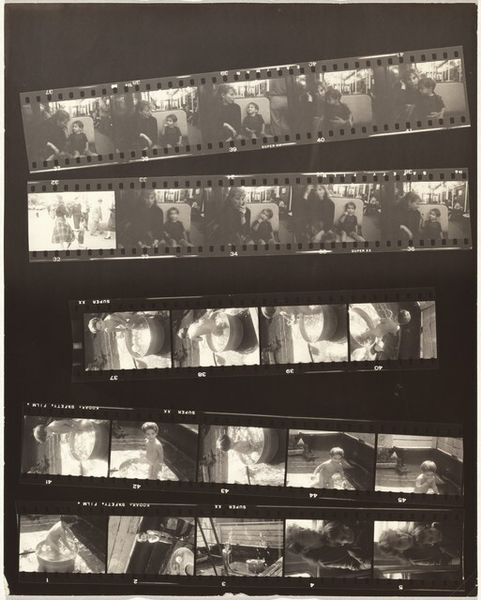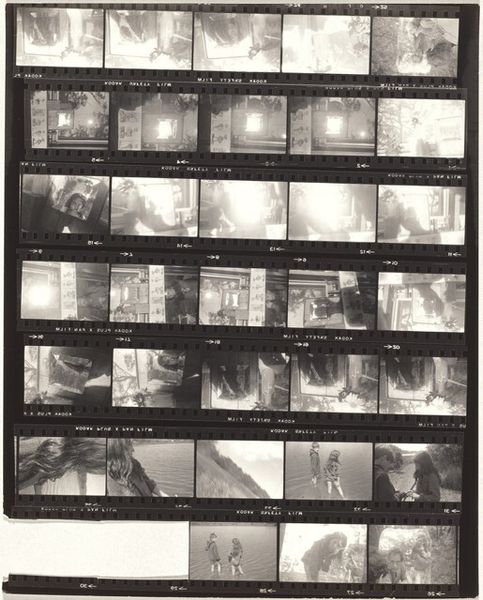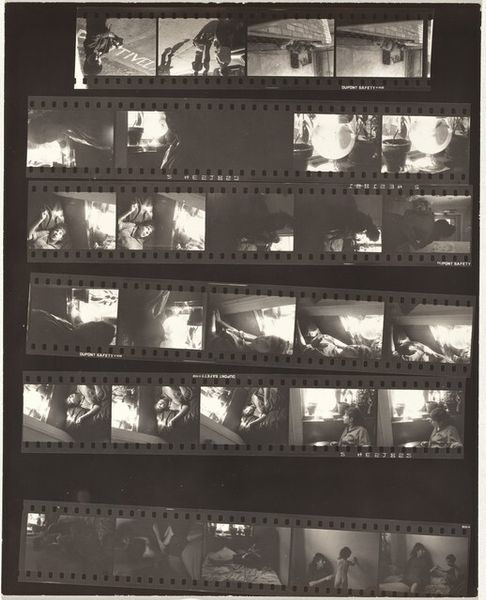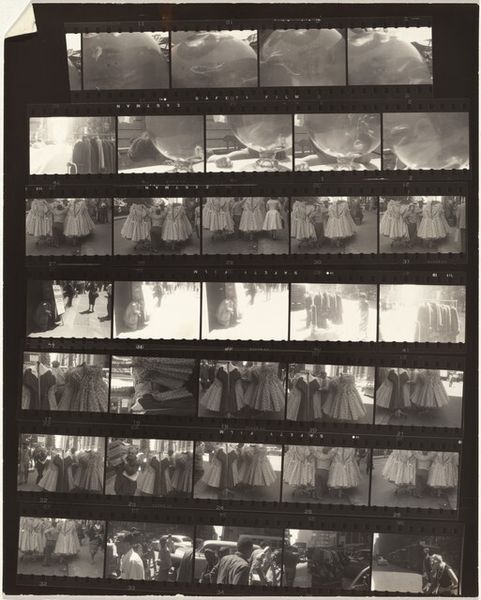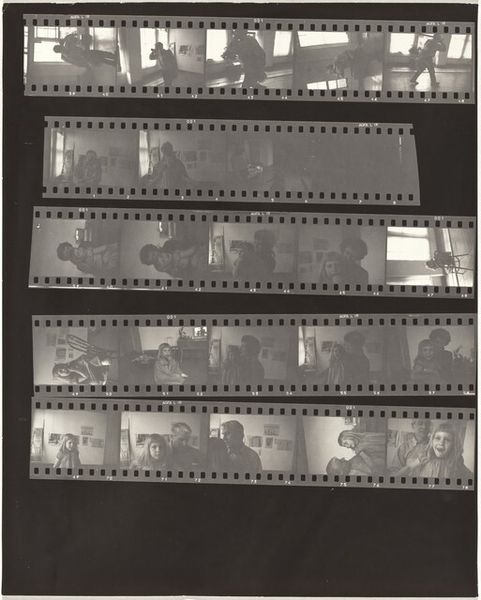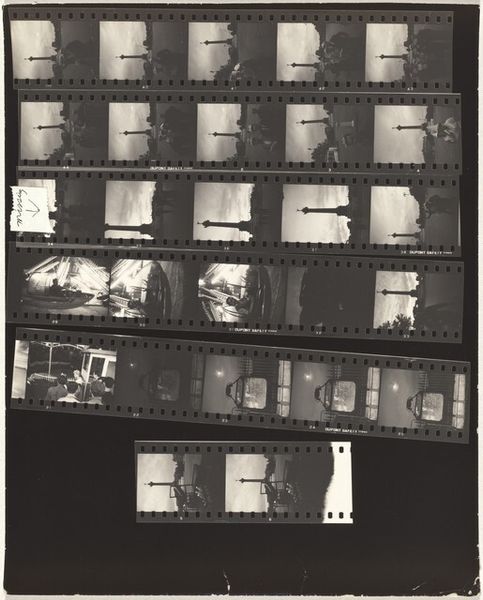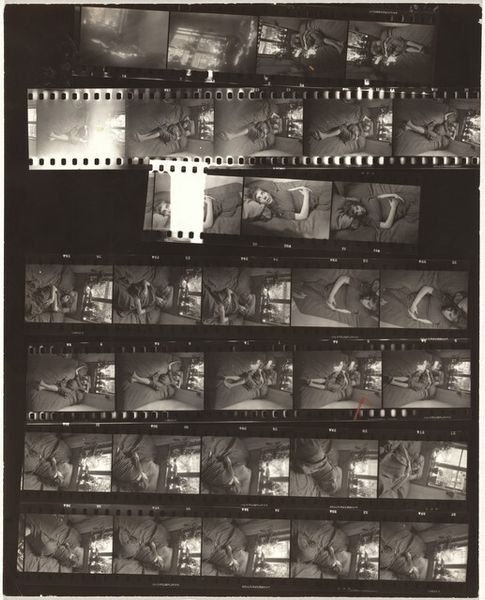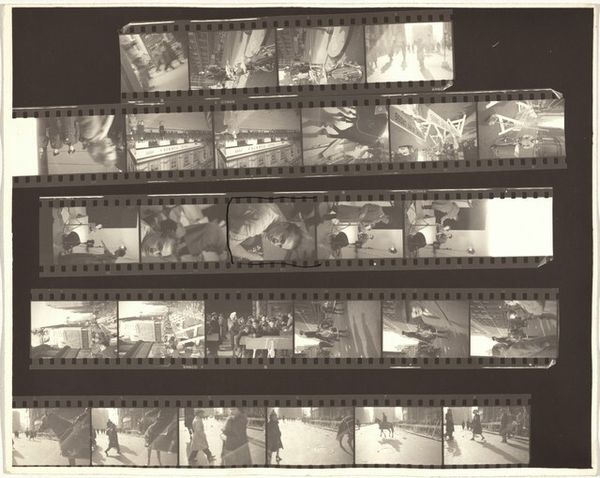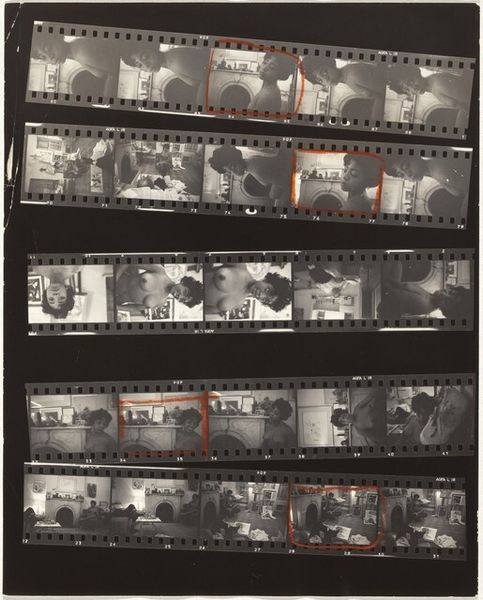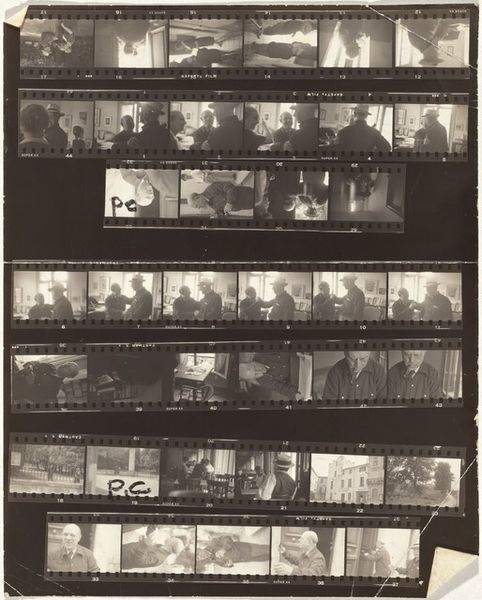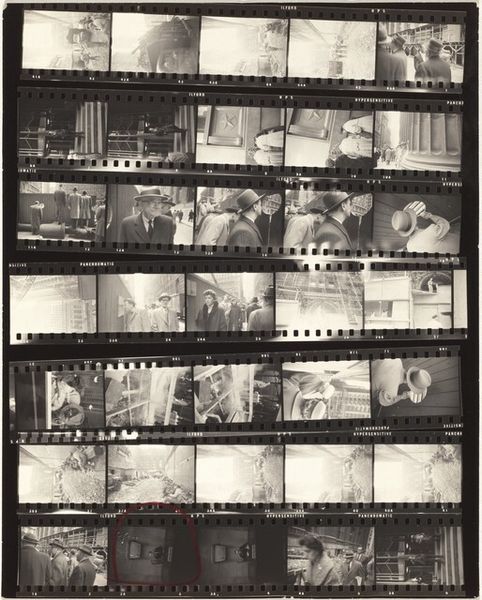
photography, gelatin-silver-print
#
film photography
#
wedding photography
#
street-photography
#
photography
#
gelatin-silver-print
#
monochrome photography
#
modernism
#
monochrome
Dimensions: sheet: 25.2 x 20.2 cm (9 15/16 x 7 15/16 in.)
Copyright: National Gallery of Art: CC0 1.0
Curator: The image before us is "Museum of Natural History no number," a gelatin-silver print taken around 1960 by Robert Frank. Editor: The contact sheet format, with its rows of sequential images, initially evokes a sense of cinematic narrative. It’s visually quite somber, muted. Curator: Indeed. The sequence hints at a powerful story. We are observing Frank's capturing of what appears to be a diorama inside the Museum of Natural History, repeated views, variations of the same exhibit. He seems to examine how we engage with fabricated versions of nature and history. Editor: And look at what seems to be the repeated presence of that single child, his scale and posture underscoring a narrative of generational difference. Museums serve as containers of time, holding relics while the next generation contemplates from a changed, unknown future. There's a definite element of wonder mixed with a certain unease. Curator: Absolutely. We should recall that Frank, a Swiss immigrant in America, consistently used photography to critique mainstream American culture in this era, documenting social alienation and marginalization. I read the child’s quiet presence against the simulated landscape of the diorama as an analogy for his own feeling of foreignness and otherness. Editor: It's interesting that you bring that up because the framing itself isolates the diorama, thus amplifying the contrast between artificial representation and tangible presence. By selecting similar frames from different strips, Frank presents repeated symbols, echoing and questioning collective cultural meanings associated with landscape, growth, and generational change. Curator: Yes, Frank isolates an aspect of his adopted nation that stages and distills the natural world, thus creating artificial connections to an older, more "authentic" world and staging an understanding of cultural history. Editor: Looking at it again, I keep returning to how the composition leads our eye through a symbolic path, marked by the small figure looking at that fabricated diorama; that boy in the museum seems to represent the enduring power of looking ahead. Curator: I see your point. It underlines that through the act of bearing witness, particularly of our historical inheritance, lies our best hope for the future. Editor: What a moving piece. This encounter underscores that to dissect an artwork like this involves appreciating the personal journeys, cultural contexts, and symbolic choices of the artist, together.
Comments
No comments
Be the first to comment and join the conversation on the ultimate creative platform.
